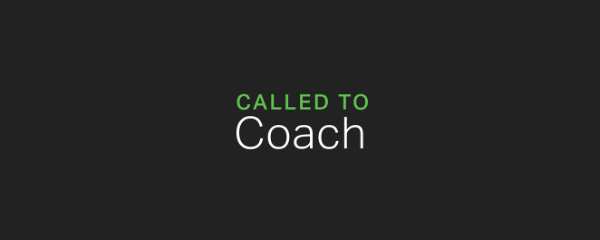Story Highlights
- Identify potential for bias in leadership selection criteria
- Find internal leadership talent hiding in plain sight
- Use a scientific approach to promote and hire great leaders
For too long, leadership development and succession have fallen under the responsibility of a select few who have based their decisions on a narrow set of criteria. The limitations of this type of succession planning process have resulted, for many organizations, in a lack of leadership diversity and the failure to adapt to a changing world.
Gallup research shows that at the managerial level, organizations fail to pick high-talent candidates 82% of the time.
Rethink Your Leadership Selection Process
The trouble isn't a lack of talent. All organizations have high-potential employees. The problem is stagnant mindsets, outdated practices and insufficient succession planning strategies. Organizations are making quick decisions to fill gaps in leadership teams rather than taking a purposeful approach to proactively identifying and developing the organization's next generation of leaders.
Your future leaders, in many cases, are already working for your organization. To systematically find them, you must design an effective strategy that fosters a diverse and full pipeline, identifies potential early and develops leadership readiness.
In many organizations, there's a mindset that permeates traditional leadership selection: "The way I got here is how you should get here." Conventional methods of succession planning require someone to recognize a potential candidate based on reputation or nominate them based on tenure. In some cases, the person who makes enough noise gets a spot on the short list.
This can leave the decision-makers susceptible to their own glare factors -- unknowingly favoring people like themselves or those who are advancing in the same way they did.
These glare factors can sound like this:
- "I had to grind away for 15 years in the field before I got to be a leader. Therefore, to be a good leader, you have to put in at least 10!"
- "I came into this role with lots of sales experience. Although this role isn't specifically sales-focused, I can't see how someone could be successful without a strong sales background."
- "You really need a certain degree to understand leadership culture. Someone without that type of educational experience would be starting from behind."
Consider it this way: Each time you name an additional "requirement," you are narrowing the pool of potential candidates who could receive focused leadership development and build your bench strength. In doing so, your organization is -- intentionally or not -- designing a system that increasingly favors more of the same. In the end, only one or two people may qualify, before you've even assessed whether they have the natural talent to lead.
Develop a Leadership Selection Strategy Backed by Science
A review of the scientific selection literature from the past 100 years -- conducted by industry expert and Gallup Senior Scientist Frank L. Schmidt and his colleagues -- summarized the predictive validity of various selection methods.
Based on Gallup's review of meta-analyses of selection methods to date, four predictors of performance should be considered:
-
Prior experiences and achievements. Instead of letting the incumbent leader singlehandedly determine what's important, a review of key experiences that are critical to success should be conducted and outlined. Those key experiences then need to be integrated into leadership and high-potential (HiPo) development programs in the organization, with a degree of open-mindedness about the different ways in which people will gain them.
-
Innate tendencies. Gallup measures innate tendencies -- key elements of personality and cognitive ability -- with scientific assessments that evaluate naturally recurring patterns of thought, feeling or behavior that can be productively applied. Using structured behavioral interviews can help reduce the impact of individual interviewers' biases and allow decision-makers to compare candidates' potential more effectively.
-
Multiple interviews (where appropriate and available). Compiling the perceptions, impressions and ratings of multiple interviewers allows the candidate (be they incumbent or external) to interact with more than just one representative from the decision-making team and ensures that one interviewer's "filter" is not the only one through which the candidate's fit is determined.
-
On-the-job observation (where available). For many individual contributor roles or even some front-line management positions, an organization may need to focus recruitment efforts externally if the talent needed to fill those roles does not yet exist within the organization. In those cases, collecting relevant, on-the-job observations can really only be accomplished through an internship or apprenticeship program. When it comes to selecting leaders, however, organizations are at a distinct advantage -- in many cases, decision-makers have a slate of current employees to consider. Taking the time to collect observations of real performance in work projects and leadership development opportunities will enable the hiring team to get "game film" or a preview of how that leader might express their talents in the role.
It's Time for Change
Traditional leadership development and succession planning have gotten us this far, but they won't get us where we want to be in the future.
It's time to lean on science and thoughtful systems to guide our decision-making and help identify the right talent to be considered for leadership positions. Organizations need to be actively engaged in identifying leadership potential early in employees' careers and developing that talent through strategic HiPo initiatives and leadership development programs.
Your future leaders, in many cases, are already working for your organization.
Nominations can be riddled with bias. The people who speak up the loudest or point to their long tenure don't always have the innate talent to lead people effectively.
Draft a leadership planning strategy that includes careful consideration of the four predictors of performance. Look for natural talent throughout your entire organization -- focusing on the group one level below senior leadership may not be a large enough pipeline to find the very best future leaders. Thinking differently about how you're selecting successors and where you're investing your efforts just might be the key to unlocking your organization's leadership potential.


